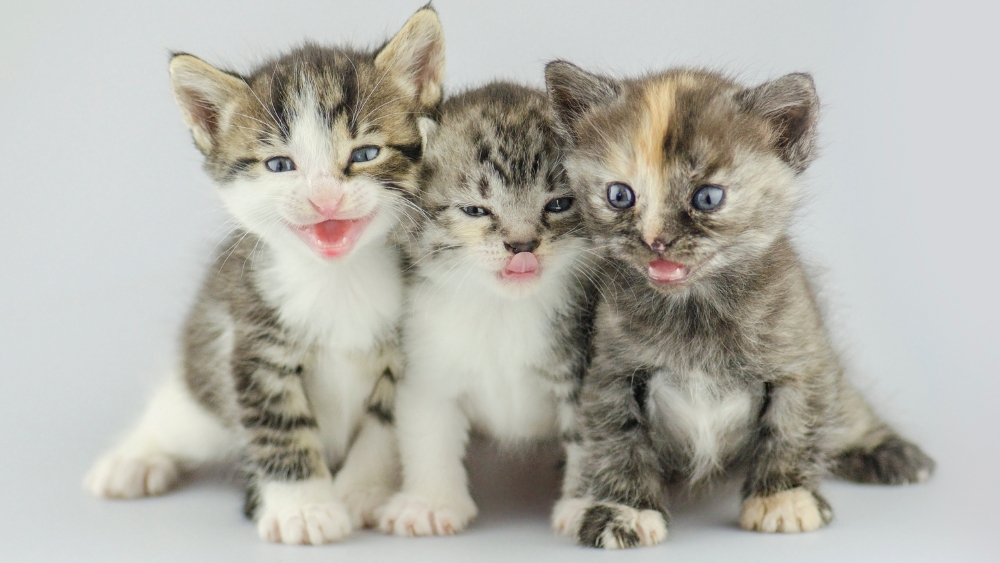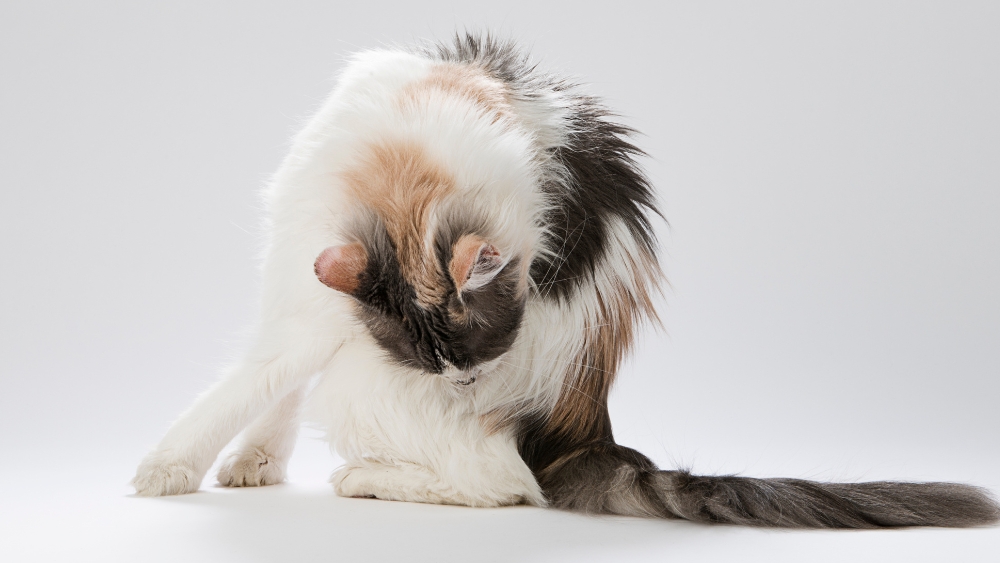Share this resource or email it to a friend!
Kittens can occasionally be born with one or more legs that appear twisted, which is due to a contracted tendon. Tendons are flexible, strong cords of tissue that connect muscles to bones and in the case of legs, enable movement by allowing muscles to contract and relax. When the tendon and attached muscle are shorter than the associated bone, twisted legs can occur.
What Causes Twisted Legs in Kittens?
Poor positioning of the fetus in the amniotic sac or crowding of fetuses in the uterus, either due to improper spacing or large number of fetuses, are the most likely causes of contracted tendons. As the fetuses get larger, the poor positioning or insufficient space cause their legs to lie abnormally and prevent them from moving. This loss of normal movement leads to the tendons shortening and stiffening, which pulls and twists the leg, usually inward. The affected joint/s are stiff and feel knotty because the tendons and muscles are so tight.
Twisted legs may affect one or more kittens in the litter. A large number of kittens or a queen who is small may increase the chance of birthing kittens with twisted legs.
Contracted tendons are not genetic. Queens who continue to birth kittens with twisted legs may have other undetected uterine or health problems and should not be used for breeding.
What Are the Symptoms of Twisted Legs in Kittens?
Kittens with twisted legs may have trouble moving and have the following symptoms:
- One leg, two front legs or two rear legs may be affected
- When two legs are affected, they may or may not be equally affected
- Affected leg/s may be stiff, turn inward or turn inward and be twisted
- The degree of twisting may be mild to severe
NOTE: Kittens with twisted legs who cannot pull themselves to a nipple may need to be held in position to nurse and require supplementation with kitten milk replacer if littermates are pushing them aside.
How Are Twisted Legs Diagnosed in Kittens?
A veterinarian should be consulted to diagnose twisted legs. Radiographs may be helpful.
Twisted legs should not be confused with congenital conditions such as radial and femoral hypoplasia, which cannot be corrected, or with Swimmer Syndrome.
What Is the Treatment for Twisted Legs in Kittens?
Treatment depends on the age of the kitten and the severity of the condition. Treatment involves warming and massaging the affected leg/s, followed by stretching and flexing them to help straighten them and increase mobility. Kittens may cry during treatment. Depending on a kitten’s age, a bottle or lickable treat may help distract during this physical therapy.
Bracing the leg/s in between treatment may be necessary in severe cases, and, if the affected leg/s cannot bear weight when the kitten begins walking. Braces can be made of tongue depressors, craft sticks, human finger splints and sleeves, which can be cut and shaped to fit tiny kitten legs. Bracing should only be attempted while under the direct supervision of a veterinarian.
What Is the Prognosis for Twisted Legs in Kittens?
If treatment is initiated immediately after a kitten is born, most contracted tendons respond to treatment.
A kitten who has other conditions, such as a missing tail, spinal deformity or nerve damage, is less likely to be completely normal after treatment.
Treatment of an older kitten is unlikely to be 100% effective. Surgical correction may need to be considered.
Some veterinarians may not be familiar with twisted legs and may recommend euthanasia if they believe that the condition cannot be treated. Recognizing twisted legs early and working with your veterinarian immediately on a treatment plan can lead to a normal life for affected kittens.






